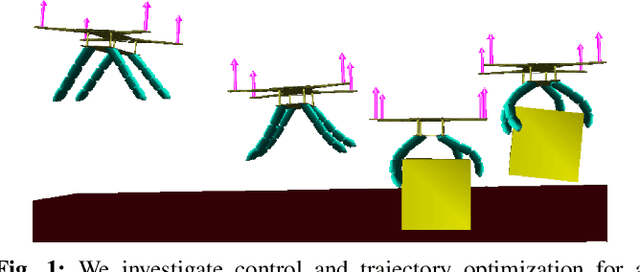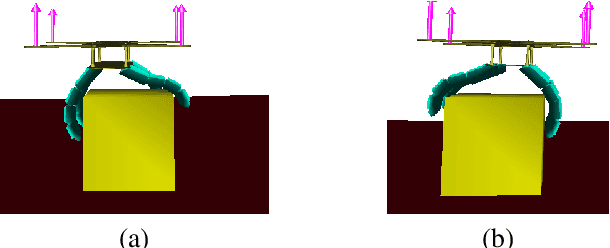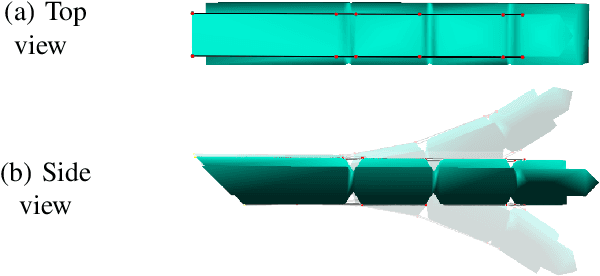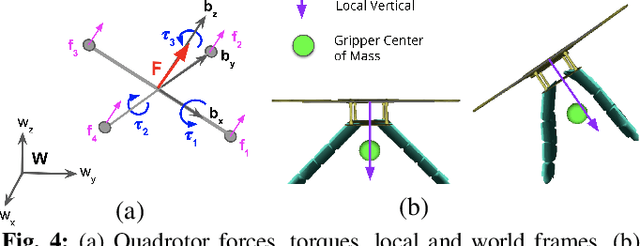Control and Trajectory Optimization for Soft Aerial Manipulation
Paper and Code
Apr 08, 2020



Manipulation and grasping with unmanned aerial vehicles (UAVs) currently require accurate positioning and are often executed at reduced speed to ensure successful grasps. This is due to the fact that typical UAVs can only accommodate rigid manipulators with few degrees of freedom, which limits their capability to compensate for disturbances caused by the vehicle positioning errors. Moreover, they have to minimize external contact forces in order to maintain stability. Biological systems, on the other hand, exploit softness to overcome similar limitations, and fully exploit compliance to enable aggressive grasping. This paper investigates control and trajectory optimization for a soft aerial manipulator, consisting of a quadrotor and a tendon-actuated soft gripper, in which the advantages of softness can be fully exploited. To the best of our knowledge, this is the first work at the intersection between soft manipulation and UAV control. We present a decoupled approach for the quadrotor and the soft gripper, combining (i) a geometric controller and a minimum-snap trajectory optimization for the quadrotor (rigid) base, with (ii) a quasi-static finite element model and control-space interpolation for the soft gripper. We prove that the geometric controller asymptotically stabilizes the quadrotor velocity and attitude despite the addition of the soft load. Finally, we evaluate the proposed system in a realistic soft dynamics simulator, and show that: (i) the geometric controller is fairly insensitive to the soft payload, (ii) the platform can reliably grasp unknown objects despite inaccurate positioning and initial conditions, and (iii) the decoupled controller is amenable for real-time execution.
 Add to Chrome
Add to Chrome Add to Firefox
Add to Firefox Add to Edge
Add to Edge